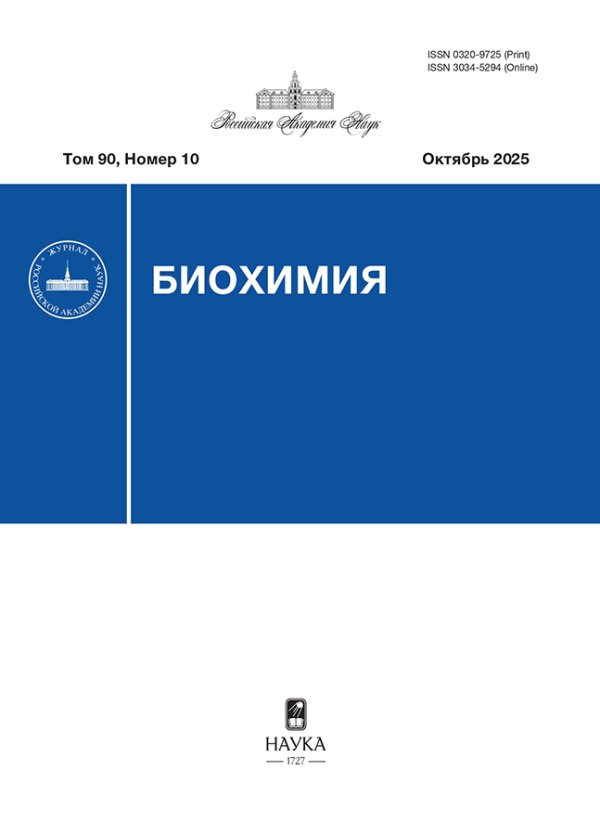Inhibitors of galactonolactone oxidase from Trypanosoma cruzi based on allylpolyalkoxybenzenes
- Authors: Chudin A.A1, Zlotnikov I.D1, Krylov S.S2, Semenov V.V2, Kudryashova E.V1
-
Affiliations:
- Faculty of Chemistry, Lomonosov Moscow State University
- N. D. Zelinsky Institute of Organic Chemistry, Russian Academy of Sciences
- Issue: Vol 88, No 1 (2023)
- Pages: 97-109
- Section: Articles
- URL: https://journals.rcsi.science/0320-9725/article/view/144628
- DOI: https://doi.org/10.31857/S0320972523010074
- EDN: https://elibrary.ru/PCFZWJ
- ID: 144628
Cite item
Full Text
Abstract
About the authors
A. A Chudin
Faculty of Chemistry, Lomonosov Moscow State University
Email: helenakoudriachova@yandex.ru
119991 Moscow, Russia
I. D Zlotnikov
Faculty of Chemistry, Lomonosov Moscow State University
Email: helenakoudriachova@yandex.ru
119991 Moscow, Russia
S. S Krylov
N. D. Zelinsky Institute of Organic Chemistry, Russian Academy of Sciences
Email: helenakoudriachova@yandex.ru
119991 Moscow, Russia
V. V Semenov
N. D. Zelinsky Institute of Organic Chemistry, Russian Academy of Sciences
Email: helenakoudriachova@yandex.ru
119991 Moscow, Russia
E. V Kudryashova
Faculty of Chemistry, Lomonosov Moscow State University
Email: helenakoudriachova@yandex.ru
119991 Moscow, Russia
References
- García-Huertas, P., and Cardona-Castro, N. (2021) Advances in the treatment of Chagas disease: promising new drugs, plants and targets, Biomed. Pharmacother., 142, 112020, doi: 10.1016/j.biopha.2021.112020.
- Lepesheva, G. I., Villalta, F., and Waterman, M. R. (2011) Targeting Trypanosoma cruzi sterol-14α-demethylase (CYP51), 75, 65-87, doi: 10.1016/b978-0-12-385863-4.00004-6.
- Kudryashova, E. V., Leferink, N. G. H., Slot, I. G. M., and van Berkel, W. J. H. (2011) Galactonolactone oxidoreductase from Trypanosoma cruzi employs a FAD cofactor for the synthesis of vitamin C, Biochim. Biophys. Acta, 1814, 545-552, doi: 10.1016/j.bbapap.2011.03.001.
- Martinez-Peinado, N., Cortes-Serra, N., Torras-Claveria, L., Pinazo, M.-J., Gascon, J., Bastida, J., and Alonso-Padilla, J. (2020) Amaryllidaceae alkaloids with anti-Trypanosoma cruzi activity, Parasites Vectors, 13, doi: 10.1186/s13071-020-04171-6.
- Chudin, A. A., and Kudryashova, E. V. (2022) Improved enzymatic assay and inhibition analysis of redox membranotropic enzymes, AtGALDH and TcGAL, using a reversed micellar system, Analytica, 3, 36-53, doi: 10.3390/analytica3010004.
- Zheoat, A. M., Alenezi, S., Elmahallawy, E. K., Ungogo, M. A., Alghamdi, A. H., Watson, D. G., Igoli, J. O., Gray, A. I., de Koning, H. P., and Ferro, V. A. (2021) Antitrypanosomal and antileishmanial activity of chalcones and flavanones from Polygonum salicifolium, Pathogens, 10, 175, doi: 10.3390/pathogens10020175.
- Aponte, J. C., Verástegui, M., Málaga, E., Zimic, M., Quiliano, M., Vaisberg, A. J., Gilman, R. H., and Hammond, G. B. (2008) Synthesis, cytotoxicity, and anti-Trypanosoma cruzi activity of new chalcones, J. Med. Chem., 51, 6230-6234, doi: 10.1021/jm800812k.
- Tsyganov, D. V., Samet, A. V., Silyanova, E. A., Ushkarov, V. I., Varakutin, A. E., Chernysheva, N. B., Chuprov-Netochin, R. N., Khomutov, A. A., Volkova, A. S., Leonov, S. V., Semenova, M. N., and Semenov, V. V. (2022) Synthesis and antiproliferative activity of triphenylphosphonium derivatives of natural allylpolyalkoxybenzenes, ACS Omega, 7, 3369-3383, doi: 10.1021/acsomega.1c05515.
- Zlotnikov, I. D., Belogurova, N. G., Krylov, S. S., Semenova, M. N., Semenov, V. V., and Kudryashova, E. V. (2022) Plant alkylbenzenes and terpenoids in the form of cyclodextrin inclusion complexes as antibacterial agents and levofloxacin synergists, Pharmaceuticals, 15, 861, doi: 10.3390/ph15070861.
- Parise-Filho, R., Pasqualoto, K. F. M., Magri, F. M. M., Ferreira, A. K., da Silva, B. A. V. G., Damião, M. C. F. C. B., Tavares, M. T., Azevedo, R. A., Auada, A. V. V., Polli, M. C., and Brandt, C. A. (2012) Dillapiole as antileishmanial agent: discovery, cytotoxic activity and preliminary SAR studies of dillapiole analogues, Arch. Pharm., 345, 934-944, doi: 10.1002/ardp.201200212.
- Laubasarova, I. R., Khailova, L. S., Nazarov, P. A., Rokitskaya, T. I., Silachev, D. N., Danilina, T. I., Plotnikov, E. Y., Denisov, S. S., Kirsanov, R. S., Korshunova, G. A., Kotova, E. A., Zorov, D. B., and Antonenko, Y. N. (2020) Linking 7-nitrobenzo-2-oxa-1,3-diazole (NBD) to triphenylphosphonium yields mitochondria-targeted protonophore and antibacterial agent, Biochemistry (Moscow), 85, 1578-1590, doi: 10.1134/S000629792012010X.
- Хмельницкий Ю. Л., Левашов А. В., Клячко Н. Л., Мартинек К. (1984) Микрогетерогенная среда для химических (ферментативных) реакций на основе коллоидного раствора воды в органическом растворителе, Усп. Хим., 53, 545-565.
- Klyachko, N. L., Shchedrina, V. A., Efimov, A. V., Kazakov, S. V., Gazaryan, I. G., Kristal, B. S., and Brown, A. M. (2005) pH-dependent substrate preference of pig heart lipoamide dehydrogenase varies with oligomeric state: response to mitochondrial matrix acidification, J. Biol. Chem., 280, 16106-16114, doi: 10.1074/jbc.M414285200.
- Morais, T. R., Conserva, G., Varela, M. T., Costa-Silva, T. A., Thevenard, F., Ponci, V., Fortuna, A., Falcão, A. C., Tempone, A. G., Fernandes, J., and Lago, J. (2020) Improving the drug-likeness of inspiring natural products - evaluation of the antiparasitic activity against Trypanosoma cruzi through semi-synthetic and simplified analogues of licarin A, Sci. Rep., 10, 5467, doi: 10.1038/s41598-020-62352-w.
Supplementary files










